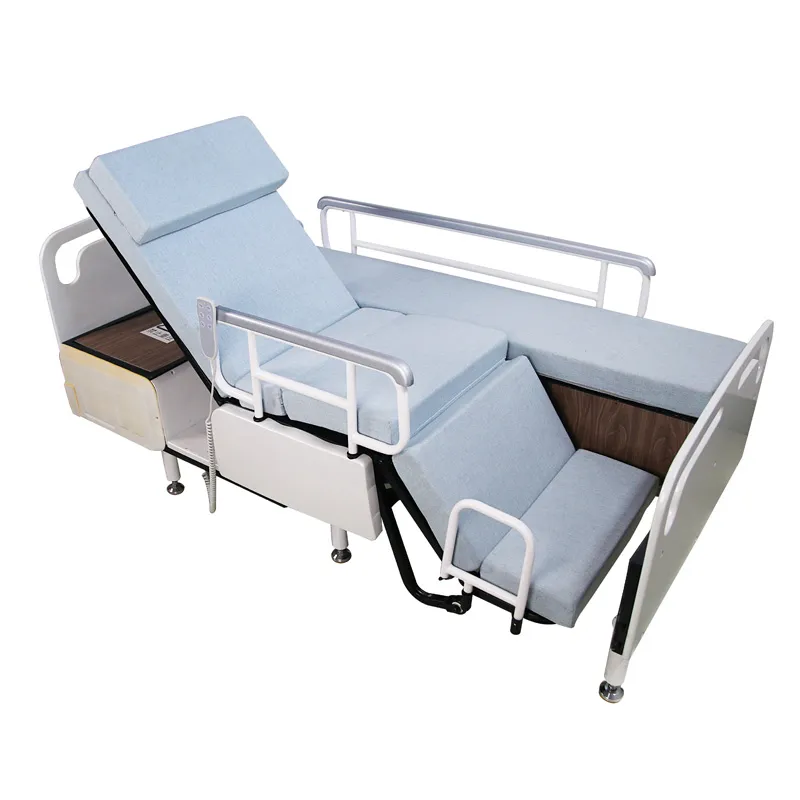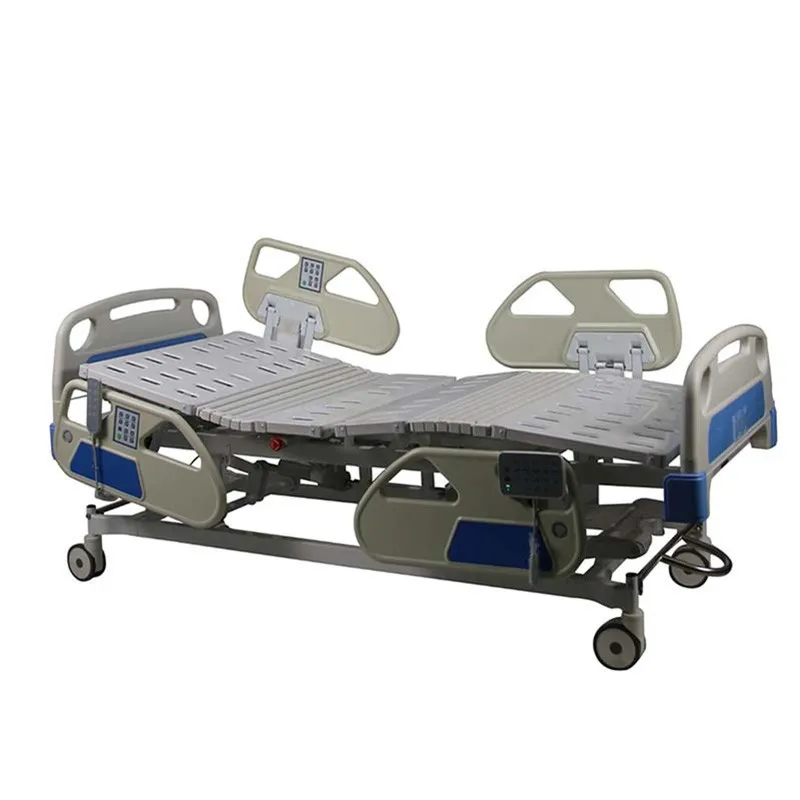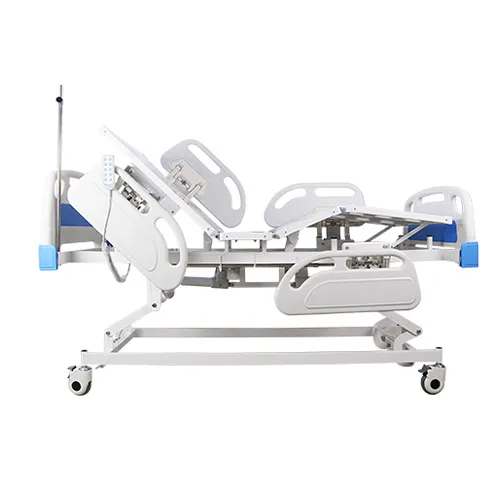With the increasing prevalence of electric hospital beds in hospitals, rehabilitation facilities, and home care, "What types of mattresses can be used with electric hospital beds?" has become one of the most frequently asked questions by purchasers, caregivers, and families.
Choosing the wrong mattress not only affects comfort but is also directly related to pressure ulcer prevention, turning coordination, bed compatibility, and infection control.
The main types of mattresses that can be used with electric hospital beds include: static foam mattresses (high-density foam, memory foam/slow rebound, gel composite), hybrid/air-air composite mattresses (foam+air hybrid), supportive air mattresses (alternating pressure), low-air-loss mattresses, air-fluidized beds, and bariatric mattresses.
However, not all common home mattresses are suitable for electric hospital beds. For example, traditional pocket-spring mattresses are generally not suitable for segmented electric hospital beds because their spring structure is not flexible enough to deform synchronously with changes in the bed frame angle. This can easily lead to the bottom "getting stuck" or uneven pressure distribution, affecting function and safety.
To facilitate understanding, we will explain the principles, advantages, disadvantages, key matching points with electric hospital beds, and clinical usage recommendations for various types of mattresses, and provide a specific checklist for purchasing and maintenance at the end.

Why is "mattress type" important for electric hospital beds?
Four key reasons: compatibility and movement matching; pressure ulcer prevention/treatment; infection control and hygiene; weight-bearing and size matching.
1. Compatibility and Movement Matching
Electric hospital beds change patient posture through segmentation (back, knee, leg) and overall height adjustment. The mattress must be flexible enough to "follow" the bed frame movement; otherwise, bottom getting stuck, wrinkling, or mattress shifting may occur, affecting comfort and pressure relief.
2. Pressure Ulcer Prevention/Treatment
Patients at different risk levels require different types of support surfaces—from basic high-density foam to dynamic alternating air mattresses, low-airflow, or aerodynamic systems. Support surfaces significantly impact pressure ulcer incidence and treatment. Medical systemic reviews indicate that dynamic support surfaces (such as alternating air mattresses and low-airflow) are more effective in pressure ulcer prevention and treatment in certain populations.
3. Infection Control and Cleanliness
Hospital settings place higher demands on mattress surface materials and their cleanability/disinfectability. Certain materials (such as waterproof and breathable covers) are more conducive to hospital infection control.
4. Load-Bearing Capacity and Size Matching
Mattress thickness and weight affect the support of the motorized bed frame, safe load-bearing capacity, and the effectiveness of the side rails; obese patients require specialized bariatric materials and bed-mattress combinations with higher load-bearing capacities.
These four points determine that mattress selection cannot be based solely on "comfort"; clinical risks, bed movement, and maintenance management must be incorporated into the decision-making framework.

Different Mattress Types: Principles, Advantages and Disadvantages, and Matching Recommendations with Electric Hospital Beds
1. Static Foam Mattresses (Static High-Density Foam, Memory Foam, Gel Foam, etc.)
• Principle: Primarily uses high-density polyurethane foam or slow-rebound memory foam, dispersing pressure through the compression and deformation of the material itself.
• Advantages: Low cost, no powered parts, lightweight, conforms well to the human body shape (memory foam), easy to integrate with electric hospital beds in sections, and avoids "pressing in" due to spring structure limitations.
• Disadvantages: Limited pressure dispersion for patients at high risk of severe pressure ulcers (especially for long-term bedridden patients or those with high BMI), poor heat dissipation and moisture management (memory foam has strong heat retention).
Electric Hospital Bed Matching Recommendations:
Suitable for patients with low to moderate pressure ulcer risk or short-term home use. The mattress thickness is generally chosen to be within the range of 6–10 inches (approximately 15–25 cm) to ensure that the bottom does not interfere when sections are added (some community profiling beds recommend a depth of about 6 inches; while air mattresses may require a deeper depth).
2. Viscoelastic Foam/Gel-Infused Mattress
• Principle: Memory foam disperses pressure using a viscoelastic material, while the gel layer improves thermal conductivity and relieves pressure points.
• Advantages: Good comfort, shock absorption, and good cushioning for mild to moderate pressure points; the gel layer improves temperature control.
• Disadvantages: Thicker mattresses may affect the segmental follow-through of the mattress; insufficient support for patients with severe pressure sores or high obesity.
Electric Hospital Bed Matching Recommendations:
As a static alternative, it has good adaptability, but when purchasing, check the mattress's flexibility, whether it maintains a stable shape at different reclining angles, and the outer cover should be waterproof and washable.
3. Inner Spring/Pocket Spring
• Principle: A series of metal springs provide support, covered by a filling layer.
• Advantages: Good breathability and elasticity; subjectively comfortable for some users.
• Disadvantages: Not suitable for most electrically operated segmented hospital beds: The high rigidity of the spring structure, its thickness, and the limitations imposed by the internal spring assembly make it difficult to deform synchronously with changes in the bed board angle, easily causing it to "stick" to the bed board or produce uneven force; in addition, the edge support and localized point-load behavior of spring mattresses can affect the pressure ulcer prevention effect.
4. Air Pressure Mattresses (Alternating Pressure / Low-Air-Loss / Hybrid)
(A) Alternating Pressure Mattress
• Principle: Composed of multiple interconnected air bladders, a pump periodically inflates and deflates alternately, reducing prolonged localized pressure by periodically changing the pressure point.
• Advantages: Commonly used for high-risk patients or those who have already developed pressure ulcers; evidence shows it is superior to ordinary foam in certain scenarios.
• Disadvantages: Dependent on pump and power supply; noise, maintenance, and pump malfunctions require management; some alternating air mattresses may cause shearing or bottom friction at the heel/bone prominence (requires proper design and monitoring).
Electric hospital bed matching recommendations:
Confirm that the bed deck can accommodate the height of the air cushion (most alternating air cushions require 5–10 inches of air cell height), and ensure that the airbags will not shift or be crushed at different bed segment angles.
(B) Low-air-loss
• Principle: Controls the skin microenvironment (reduces humidity) and provides distributed support by gently delivering warm, dry air to the mattress surface.
• Advantages: Excellent skin microclimate management, promotes wound healing and prevents maceration.
• Disadvantages: High cost, complex equipment, requires maintenance and filter replacement.
Electric hospital bed matching recommendations:
Often used in conjunction with an electric hospital bed for treatment or high-risk prophylaxis (Group 2 support surface). It is necessary to confirm that the bed can support and accommodate the placement of the air cushion pump.
(C) Air-fluidized Bed
• Principle: Heated air is passed through fine particles (such as silica microbeads), making the patient feel as if they are "floating" on the particles, resulting in excellent pressure dispersion.
• Advantages: Proven to improve healing in severe pressure ulcers (Stage III/IV) and slow-healing wounds.
• Disadvantages: Large size, high cost, and complex operation; used only in specific clinical settings and not typically for home use.
5. Hybrid Mattresses
• Principle: Combines foam with air chambers (e.g., bottom layer foam support + upper alternating air chambers or gel layer) to attempt to balance comfort, stability, and pressure relief.
• Advantages: High flexibility; can switch between different risk levels (some models support static foam even when the air pump is off).
Electric Hospital Bed Matching Recommendations:
A popular choice for home electric hospital beds; when purchasing, confirm compatibility between the air pump location, total mattress depth, and the segmentation capability of the electric bed.
6. Protective Overlays vs. Replacement
Overlays are less expensive than full mattress replacement, but their effectiveness is limited.
Clinical Recommendation: High-risk or already damaged patients should use a full support surface (replacement mattress) directly, rather than a simple overlay.

Special Populations and Recommendations
1. Bariatric Patients
Choose a dedicated bariatric electric hospital bed with a corresponding bariatric mattress. The weight-bearing capacity, bed surface width, mattress thickness, and support materials must be customized according to the patient's weight and care needs. Ordinary mattresses and bed frames are prone to premature failure or safety hazards.
2. Children/Small-Size Patients
Children's beds or small-sized electric beds must be paired with a dedicated small-sized mattress. Adult mattresses cannot be used directly. Prioritize mattress-bed combinations with anti-pinch features and small gaps in the guardrails to reduce risks.
3. Patients Prone to Incontinence or with Excessive Discharge
Preferably use a waterproof and antibacterial/sterilization-resistant mattress cover, along with frequently changed sheets and absorbent pads to prevent internal mattress contamination leading to mold and material degradation.

How does Dayang Medical balance price and quality?
At Dayang Medical, we believe in delivering both affordable prices and high quality products. As a manufacturer and supplier in China, we control production costs by managing our own factory operations, which allows us to offer low price deals and wholesale discounts. At the same time, we never compromise on quality—every wheelchair, bed, or walker is tested under strict quality management systems.










